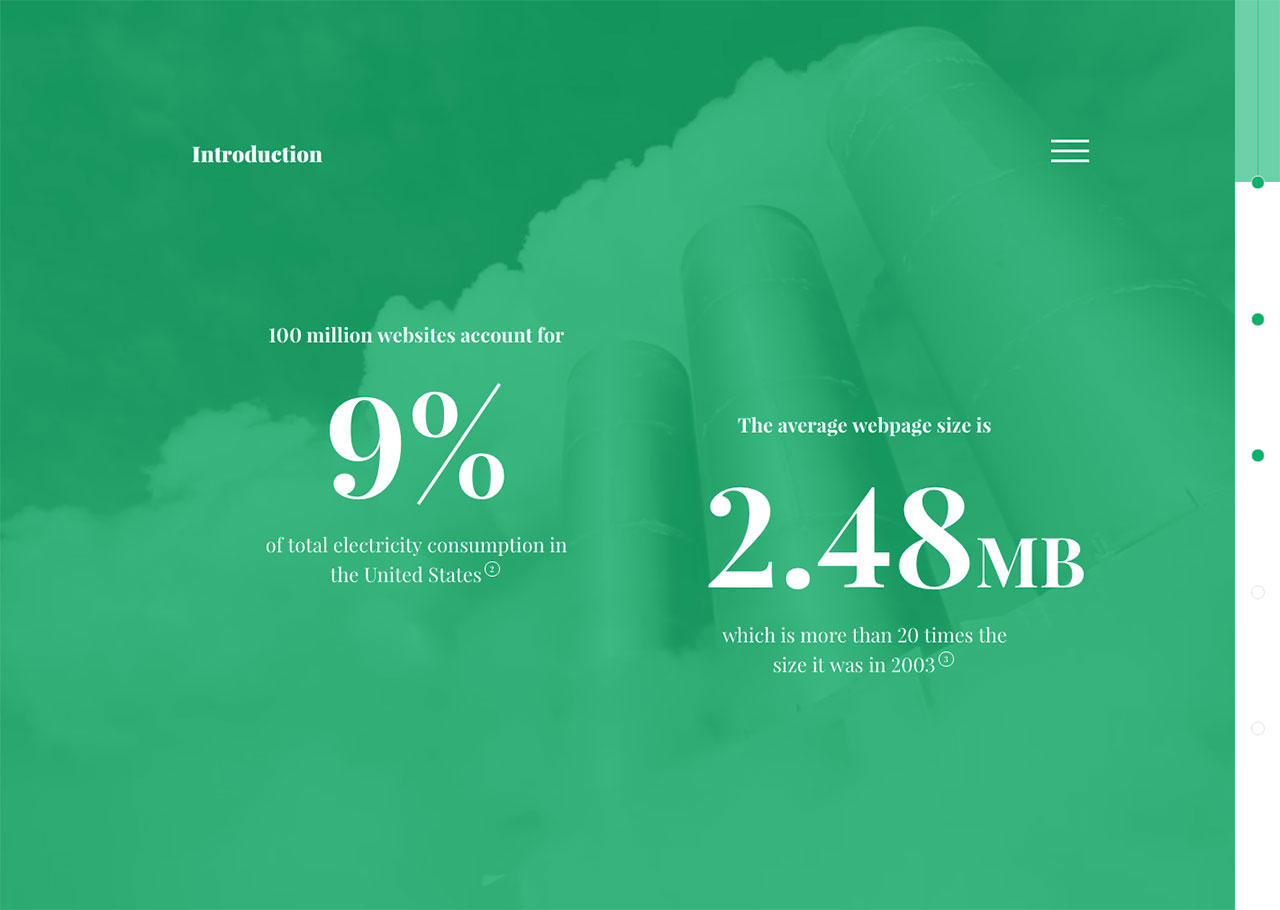
The digital information that we ravenously produce and consume seems to be free. According to one source, we are posting 2.5 million images to Instagram every minute. I am no exception; my Twitter consumption has recently peaked for a reason that I will not dispel and that has absolutely nothing to do with the U.S. election.
But, unfortunately, the digital information that we love and share is not free. Yes, there are those pesky privacy issues — the targeted (or “sponsored”) ads on Twitter and websites are sometimes ridiculously relevant to me. But, to my mind, there is an even greater and more long-term cost than the loss of individual privacy.
Data is Powered Mostly by Fossil Fuels
Every time we click, upload a file or download an app, we make use of huge data centres that are mostly powered by dirty energy. According to one journal, the Internet will soon amount to nearly 1 billion tons of CO2 annually or approximately 10% of global electricity usage.
Some projections show that the information and communications sector of our economy is in fact expected to double by 2020! All of that data coming up and down the pipes could be powered by renewable energy if we so desired.
Websites and Applications Are Also at Fault
As well, there are approximately 100 million websites online today, accounting for an equivalent of almost 10% of the electricity used in the United States each year. Many, if not most, of these sites are powered by big, bloated and inefficient code and other assets like video and photographs. In fact, the average web page has now ballooned to 2.5 MB, which is 20 times bigger than a page 13 years ago.
If we continue to power our websites, applications, digital tools, archives, and data collections with non-renewable energy, we, the users and makers of the web, are contributing to the warming of the planet by our very taps, clicks, and swipes.
The Serving.Green Project
A few weeks ago, we launched a new website called Serving Green that hopes to demonstrate, in accessible and user-friendly terms, the importance of green data centers to our global and connected economies and the role that websites and applications play in warming our climate. Our goals were as follows:
- To educate the public about the need for hosting websites and applications efficiently with renewable energy
- To provide a user-friendly, memorable, and straightforward way for visitors to understand the issues around a sustainable web
- To offer a small and useful set of resources that can be easily and readily updated
- To create a beautiful and engaging web experience on a modest page size budget
The concept of “serving” not only refers to serving data but serving visitors and users of our digital products. While I think we come close to meeting these goals, this website will be used as an ongoing educational tool to help us start and continue a conversation about how our digital economy can also be part of a green economy.
Standing on Green Shoulders
This project was a collaboration between us at Manoverboard and the ground-breaking work already done around building a sustainable web by Tim Frick of Mightybytes and John Haugen of Third Partners. Tim has literally written the book on designing for sustainability, which was just released by O’Reilly; the book is superb. John is the author of a paper called Green Web Hosting that we commissioned a few years back. Over the course of a year, Tim, John and I spoke nearly every week, discussing how we can get the topic of serving green in front of a wider audience. This site is one very prominent outcome of those conversations.
But this site is actually part of a much larger conversation happening among numerous designers and developers, sustainability professionals, business owners (especially B Corps), and large nonprofit organizations. You’ll see our shout-outs on the Serving Green credits page, but I would be remiss if I didn’t thank the following people and organizations for their inspiration: Greenpeace’s Click Clean Scorecard, James Christie and Jen Briselli and their online Sustainable UX conference (happening again in February 2017), Green Web Foundation, Chris Adams, Bernard Yu of Green America, Mike Gifford and the following B Corps: Canvas Host, OpenConcept, Green House Data, DOJO4, Closed Loop Advisors, and B the Change Media.
More About a Sustainable Web
Please visit the Serving Green site and let us know your thoughts, comments and questions. We plan on keeping this site alive with updated ideas, stats, and solutions over the next few years.
The next few weeks are chockablock with events about web usability and sustainability.
As part of World Usability Day 2016, which is focused on sustainable/green user experience in 2016, I will be speaking on the topic of a sustainable web with Tim Frick and other panel members. This will be a free online event on Thursday, November 10, 2016. You can register on Eventbrite.
As well, I will be offering a free webinar called Sustainable Web Strategy on Wednesday, December 14, 2016. My focus will be on what I call the “bonsai web”, a new model for planning, tending, and developing online organizational communications with a new set of sustainability practices in mind. Spaces are limited. I hope you’ll join me then.
Update
The above webinar is now on YouTube at The Bonsai Web: A Sustainable Website Strategy. Or just watch below. And thanks!
https://youtu.be/fM21W5dStkg

